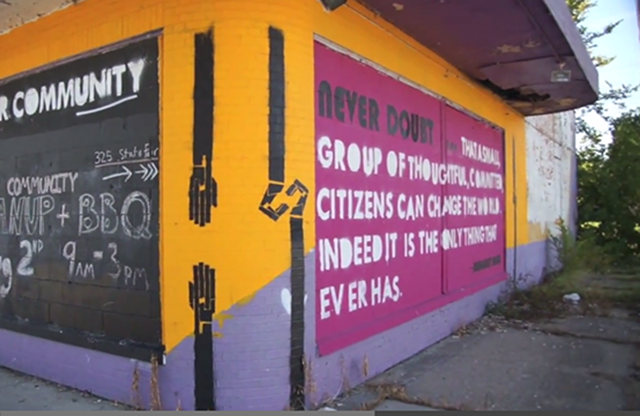
Postcards help residents of Detroit communities connect
Hunter Franks, an artist and founder of the Neighborhood Postcard Project and League of Creative Interventionists, is in Detroit for three weeks using creativity to build community with Knight Foundation support.
Not many Detroiters have been to the Lindale Gardens neighborhood, located near 7 Mile and I-75. Like many Detroit neighborhoods, it faces challenges of blight and crime. But there are also a lot of positive stories in Lindale Gardens. Stories that people don’t hear. Related Links
“A creative change of conversation in Detroit” by Hunter Franks on Knight Blog (09/19/14)
Planned activities for #CreateDetroit tour by Hunter Franks
“The Creative Interventions Tour: Lessons from Macon, Ga.” by Hunter Franks on Knight Blog (4/10/14)
“Breaking down barriers in Akron through shared art experiences” by Hunter Franks (8/6/14)
“Creativity builds new community connections in Philadelphia” by Hunter Franks (7/9/14)
On the other side of the city is the Grosse Pointe community, an affluent suburb that has a history of race and class tensions with Detroit. These tensions between the two very different communities recently resurfaced when Grosse Pointe built a shed in the middle of the street at their farmers market complex on the border of Detroit and Grosse Pointe. Many said the shed was built to act as a wall to keep out the nearby poor Detroit residents.
To break down these barriers and connect strangers in the two very different neighborhoods, the Neighborhood Postcard Project partnered with Lindale Gardens neighborhood community activist and designer Bucky Willis to collect personal, positive stories from the residents of Lindale Gardens on postcards. These postcards were then sent to random addresses in Grosse Pointe.
One postcard, from 20-year-old Martaz Crutchfield ended up in the mailbox of Grosse Pointe resident Mary Mobley. The postcard read, “I love Lindale Gardens because wherever I go, people give me props. Not of street credit, but because of my willpower, athleticism, and my positive attitude. Believe in your strength. No matter what, never give up on yourself or on positivity.” Martaz’s inspiring words struck a chord with Mary and she reached out to me to learn more about the project. I asked if she would be interested in meeting with Martaz in person, and next thing you know we were sitting around a table at a coffee shop along with Lisa, Martaz’s mother, and Amy, a friend of Mary’s.
We chatted for over an hour, as we discussed everything from how Mary met her husband to Martaz’s work mentoring the wrestling team at his local high school. Stories and smiles filled the discussion as night began to fall. Mary and Lisa exchanged contact info, pledging to meet again soon, and everyone hugged a warm goodbye.
A simple postcard can break down barriers. A simple postcard can erase stereotypes. A simple postcard can build community.

Recent Content
-
Communitiesarticle ·
-
Communitiesarticle ·
-
Communitiesarticle ·


